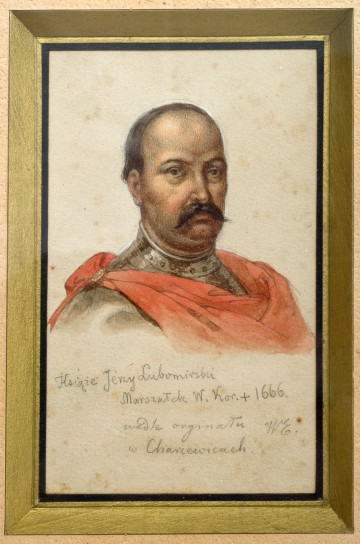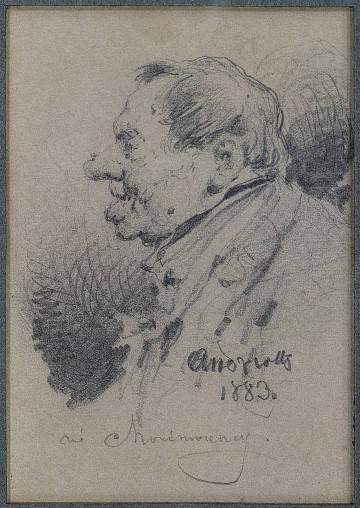
Portrait of Jerzy Lubomirski
XIX century
Castle Museum in Łańcut
Part of the collection: European classics of modernity
The biography of Konstanty Laszczka, brought up in the countryside, corresponded to the positivist figure of a gifted child from the people, preserved in Henryk Sienkiewicz's novella Janko Muzykant [Janko the Musician] (1879). Unlike the literary hero, thanks to the patron's financial support, Laszczka could receive a thorough education, achieve professional success and even become an educator of the next generations of artistic youth. The departure from the Mazovian countryside to Warsaw was connected with taking up an apprenticeship in Jan Kryński's sculpture atelier. There, Laszczka not only studied antique plaster and got acquainted with modern galvanic techniques, but also nurtured his childhood fascinations and opened himself to the subject of Slavic folk tales and beliefs. At the master's instigation, the first works inspired by folklore were created: Grajkowie [The Musicians] (1885), Popiersie górala [The Bust of a Highlander] (1889), Czarna dusza [The Black Soul] (1889). In 1927, from his experience as a teacher of drawing and modelling at secondary schools in Warsaw and, in particular, as a professor at the Academy in Kraków, he wrote: Today, in the times of general materialisation, rarely does anyone's mind move to the world of dreams, and few people understand the fairy tale and its meaning. That is why an artist living in the world of beauty and poetry should draw the attention of his surroundings to the fact that fairy tales should not be underestimated, because even the most ordinary ones contain a lot of true wisdom and beauty (Konstanty Laszczka, Gawędy z uczniami [Chatting with the Students], Warsaw 1927, p. 5). Laszczka gave the title Bajka [The Fairy Tale] to many of his compositions. A female nude, shown for the first time at the jubilee exhibition of the Society of Polish Artists Sztuka in 1922 under the name Bethsabea, functioned as Bajka during the General National Exhibition seven years later. The artist titled the female head in the same way, resembling the previous work with a similar, stylised ancient Greek hairstyle. It is a portrait of Balbina (called Balladyna) Śwityczówna (Widacka), his student from 1924-1929 - a sculptor and poet, later a member of the Queen Wanda Society of Lechic Writers in Warsaw.
Szymon Piotr Kubiak
Author / creator
Dimensions
cały obiekt: height: 58 cm, width: 20 cm
Object type
sculpture
Creation time / dating
Creation / finding place
Identification number
Location / status

XIX century
Castle Museum in Łańcut

koniec XIX w.
Castle Museum in Łańcut

koniec XIX w.
Castle Museum in Łańcut
DISCOVER this TOPIC
Museum of King Jan III's Palace at Wilanów
DISCOVER this PATH
Educational path